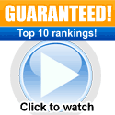This site is for sale,
Learn More
Building & Structuring Inbound Links Part 1
12 Essential Strategies
By Stephen Mahaney
Originally Published: December 2004
One of the trickiest aspects of search engine optimization is the process of building high quality incoming links. And, as you've undoubtedly heard, it's also the single most important thing you can do to improve your rankings. The more inbound links a page has, the more
popular
it is - and search engines
like
popular pages.
The challenge for most sites is to accumulate enough incoming links to appear relevant to the engines without tripping any one of the many spam filters and penalties that are applied to sites that
cheat. So, the secret to getting it right is to...
take the search engine's point of view
when building your incoming link structure.
The key point to remember is that search engines like
natural
link structure - they hate
artificial
link structure.
|
Natural
vs.
Artificial
Link Structure
|
Natural Link Structure
-
inbound anchor text varies
-
inbound link count increases gradually
-
site links-out to only reputable pages
-
links are rarely reciprocal
|
Artificial Link Structure
-
inbound anchor text identical
-
inbound link count increases suddenly
-
site links-out to
link farms
or
web rings
-
high percentage of links are reciprocal
|
|
Natural vs. Artificial Links
Natural links vary in anchor text while artificial links tend to be identical. Natural links increase
gradually
as referral sites add links one by one over time; artificial links can sprout in great numbers
all of a sudden.
Sites designed around natural links don't usually swap links, so their outgoing links tend to point to pages that are known by the engine to be in good standing. Oftentimes these pages have been indexed for many years and may even be
white listed
- a term that identifies trusted sites
not
to be penalized. Sites designed around artificial links will often participate in link swapping and have outgoing links that point to pages that resemble
link farms,
web rings, or
isolated nodes
(i.e. page groups linking to each other but lacking inbound links from outside
trusted
sites).
Natural links tend
not
to be reciprocal. Artificial links, however, rely heavily on link exchange tactics, suggesting that the sole purpose of the link is
reciprocity
- having little or nothing to do with adding value for the site visitor by way of providing worthwhile content.
Keeping these facts in mind, one should strive to build the most natural-looking incoming-link structure possible. From a search engine's point of view (SEPOV), the best kind of links are
unrequested
links. The engines are looking to bestow high rankings on
only
those pages that people
voluntarily
link to due to great content - not because some webmaster has spent a lot of time swapping links. Read on for tips and tricks on how to build the best incoming-link structure and boost your PageRank dramatically.
Choose Your Links Wisely
While it's true that almost any link from anyone will add
something
of value to your page popularity, it's best to get links from
authoritative
pages. Such pages are considered
important
and are usually identified as such by Google within their PageRank scoring system. The higher the PageRank, the better the link. Directory examples would include sites like Yahoo and DMOZ. Others like PBS.org, National Geographic, CNN, or ZDnet would be exceptional authoritative site links regardless of topic since each has been assigned a PageRank of 9 or better on Google's ten-point scale.
Your next best option is to acquire links from pages that are
trusted. Trusted pages are sites that have been indexed for a while and have already been assigned a Google PageRank - usually PR=5 or better. It helps even more if these pages are
on-topic
- i.e. they match the topic of your page. Links from on-topic
trusted
pages can give you a significant boost in rankings.
Continued:
12 Essential Strategies for Building & Structuring Inbound Links Part 2 >>>
This article is copyrighted and has been reprinted with permission from FirstPlace Software.
Site Promotion Articles Indexes:
|

![]()